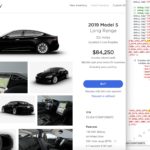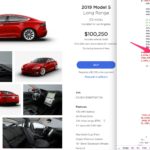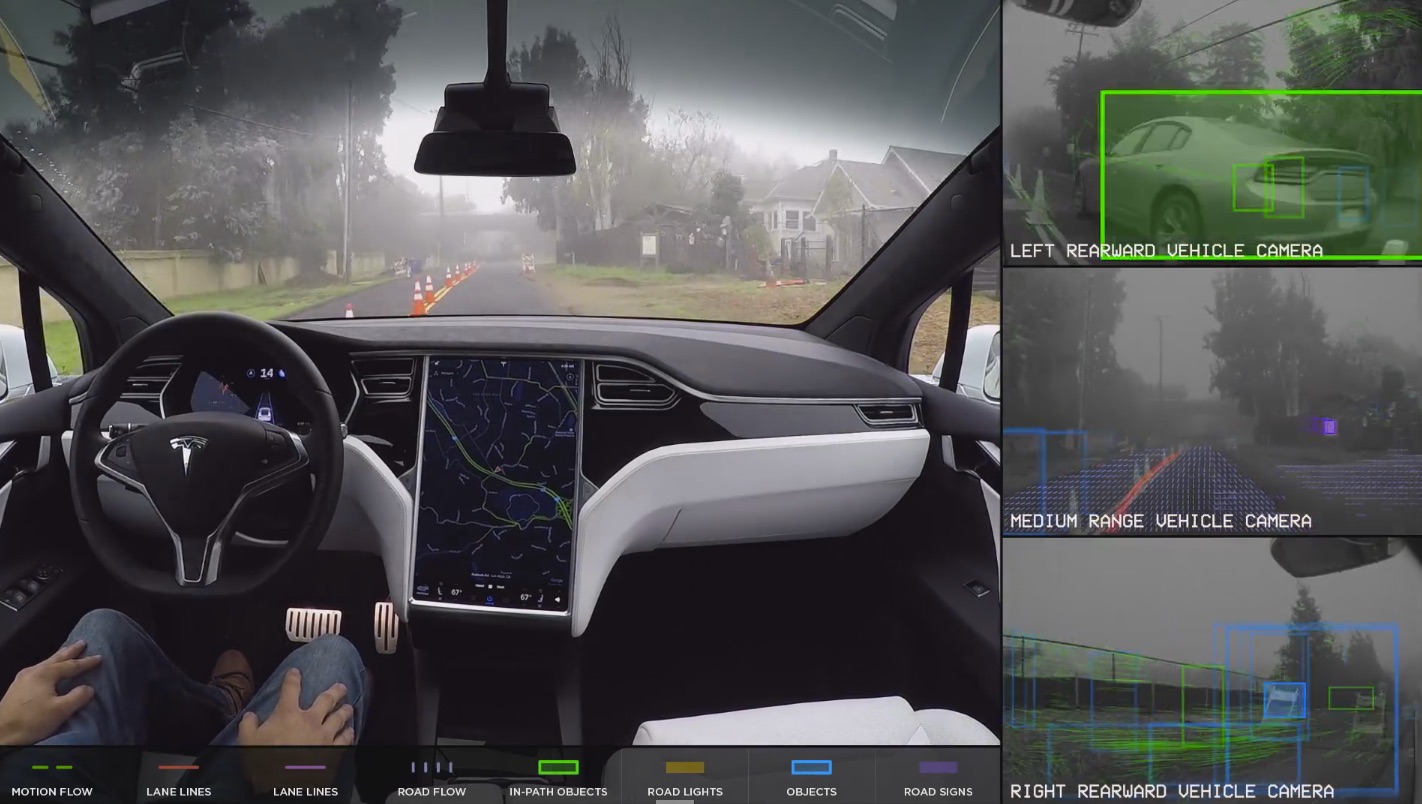
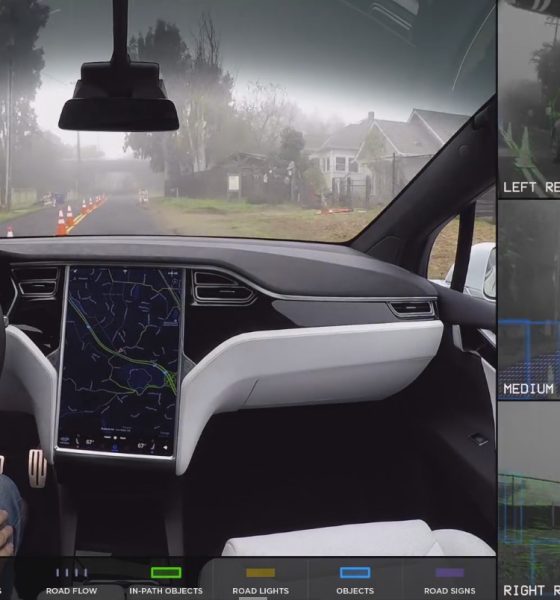
News
Tesla Model S, X with “Hardware 3” for Full Self-Driving now in production, inventory codes indicate
Tesla has begun producing Model X and Model S vehicles with the latest Autopilot hardware to support Full Self-Driving capabilities. Dubbed “HW3”, the new hardware is Tesla’s next iteration of its semi-autonomous driving-assist feature that includes Navigate on Autopilot, Advanced Summon, Auto Lane Change, Autopark, and the ability to respond to traffic lights.
Looking at the source code behind Tesla’s New Inventory site, we’re able to see that recently produced Model S and Model X with Autopilot have been given an “APH4” options code, signifying that these vehicles are equipped with the latest Full Self-Driving hardware. Tesla uses the option code sequence “APHx” to denote the type of Autopilot hardware installed in its vehicles. APH2 indicates HW2 and APH3 = HW2.5 (Autopilot 2.5). Thus, APH4 is HW3.
Here’s a side-by-side comparison of two 2019 Model S with and without the new Hardware 3 for Autopilot.
- 2019 Tesla Model S with Hardware 2.5 (2019 Tesla Model S with “Hardware 3” (APH3)
- 2019 Tesla Model S with “Hardware 3” (APH4)
Source: Tesla New Inventory listing
The tip comes to us from Tesla Info and Inventory, a web site which compiles inventory data for Tesla vehicles around the world, noted that internal vehicle “option codes” indicated a change from Hardware 2.5 to Hardware 3. The site pulls source data directly from Tesla’s car listing pages and analyzes the “config” data embedded in the HTML to determine this information.
This discovery aligns with the schedule for the HW3 installs previously set forth by Tesla CEO Elon Musk. Last October, Musk estimated a 6-month wait before the the new chips would be installed in all new production cars, meaning an April showing.
~6 months before it is in all new production cars. No change to sensors. This is simple replacement of the Autopilot computer. Will be done free of charge for those who ordered full self-driving.
— Elon Musk (@elonmusk) October 16, 2018
Musk has touted HW3 as the “world’s most advanced computer designed specifically” for the purpose of self-driving functionality, with Tesla holding a notable lead in the field overall. “If you add everyone else up combined, they’re probably 5% — I’m being generous — of the miles that Tesla has. And this difference is increasing,” Musk said in Tesla’s 2018 Q4 earnings call.
For vehicles without HW3 installed at the time of manufacture, Musk has stressed the simplicity of the upgrade process in Tesla’s 2018 Q2 earnings call. “We take out one computer and plug in the next. That’s it. All the connectors are compatible and you get an order of magnitude, more processing and you can run all the cameras at primary full resolution with the complex neural net.”
The simple upgrade to HW3 does require Tesla cars to have HW2 as the equipment needed for its functionality was included in those vehicles. The software uses an array of 8 cameras, 12 ultrasonic sensors, and a forward-facing radar paired with Tesla’s vision and neural net system.

The first features of the Full Self-Driving suite were included in the Version 9 software released in October. “Navigate on Autopilot”, an active guidance feature with Autosteer for highway driving (with driver supervision) came soon after with the release of HW2.5. Improvement in performance from software Version 8.1. to 9.0 was increased by about 400% in useful operations per second; however, the difference between V9.0 and HW3 will make a difference of 500-2000%, according to Musk. Tesla has been releasing iterative over-the-air updates over the last year in preparation for the coming HW3 and complete FSD capabilities.
The current iteration of Tesla’s FSD capabilities includes core highway navigation, autopark, and Summon for car retrieval in parking lots. Recognition of traffic signs and signals as well as city street driving are expected to be coming later this year.
Now that HW3 is on its way to current and future Tesla customers, Full Self-Driving certainly feels right around the corner. However, the biggest obstacle to full implementation still sits on the regulation side, a time-consuming yet necessary part of the consumer vehicle industry, especially when a company is handing over responsibility to a computer. Tesla’s Autopilot page still references full self-driving capabilities as something “in the future” that may happen after regulatory approval which “may take longer in some jurisdictions.”
Tesla’s dominance in the all-electric market will most likely work in its favor to overcome the legal hurdles in the way of autonomous driving. As sales continue to rise with the growing number of customers now able to meet more affordable price points, Tesla will keep accumulating useful data to hone its FSD software and make the case for its much-safer-than-humans capabilities. Other companies may have long been battling the same regulatory demons Tesla is now up against, but the electric car was also “killed off” prior to their very influential arrival on the market. In “Musk World”, there is improbable, but not often impossible.

News
Tesla Full Self-Driving gets sparkling review from South Korean politician
“Having already ridden in an unmanned robotaxi, the novelty wasn’t as strong for me, but it drives just as well as most people do. It already feels like a completed technology, which gives me a lot to think about.”
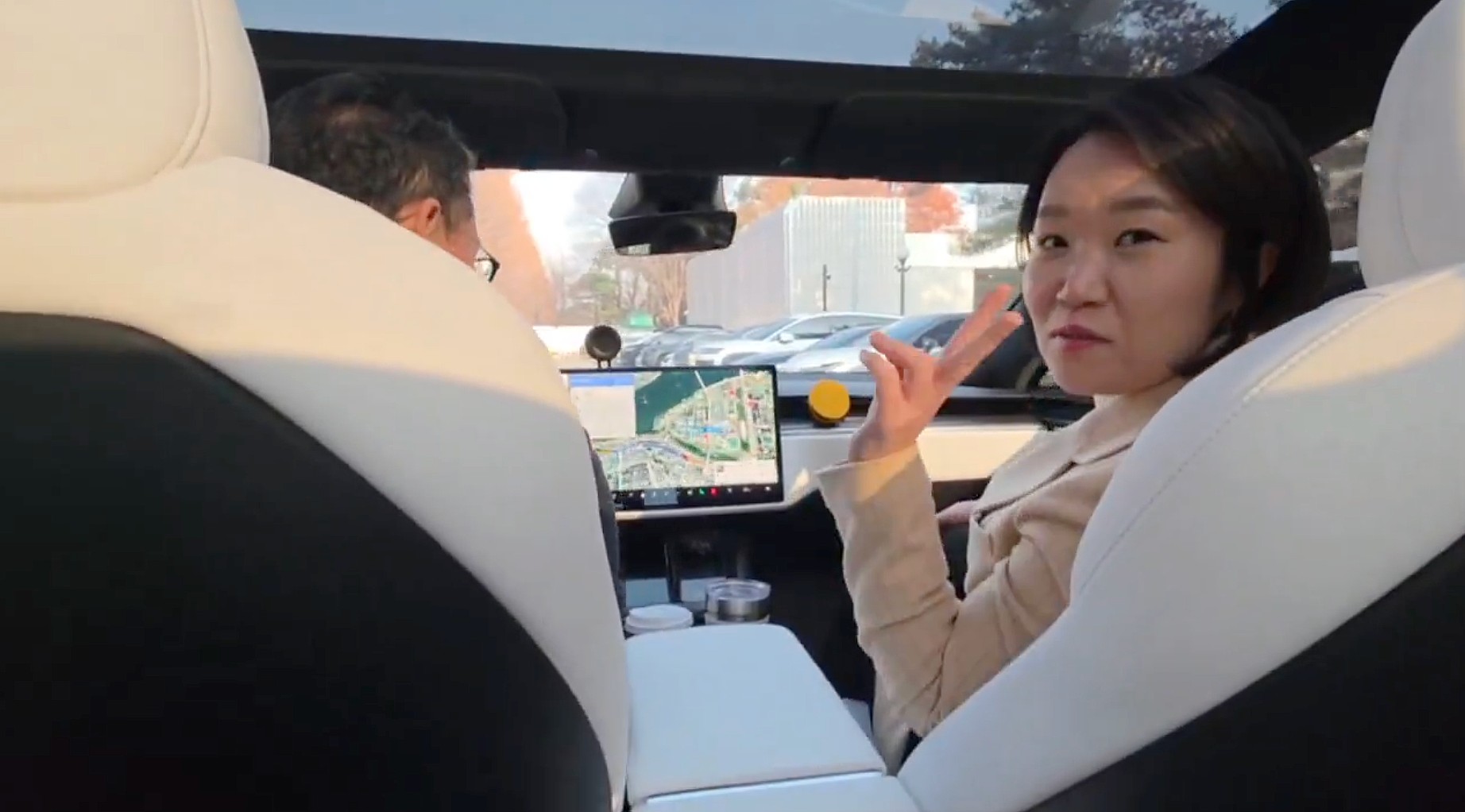
Tesla Full Self-Driving got its first sparkling review from South Korean politician Lee So-young, a member of the country’s National Assembly, earlier this week.
Lee is a member of the Strategy and Finance Committee in South Korea and is a proponent of sustainable technologies and their applications in both residential and commercial settings. For the first time, Lee was able to utilize Tesla’s Full Self-Driving technology as it launched in the country in late November.
Her thoughts on the suite were complimentary to the suite, stating that “it drives just as well as most people do,” and that “it already feels like a completed technology.”
드디어 오늘, 서울에서 테슬라 FSD 체험 했습니다.
JiDal Papa님의 모델S 협찬에 힘입어^^ 파파님 정말 감사합니다.
국회 -> 망원시장 -> 홍익대 -> 국회 복귀 코스였고요.
이미 무인 로보택시를 타봐서 그런지 신기함은
덜했지만, 웬만한 사람만큼 운전을 잘하네요.이미 완성된 기술이라고… pic.twitter.com/8pAidHBpRG
— 이소영 국회의원 (Soyoung Lee) (@im_soyounglee) December 17, 2025
Her translated post says:
“Finally, today I got to experience Tesla FSD in Seoul. Thanks to the Model S sponsored by JiDal Papa^^, I’m truly grateful to Papa. The route was from the National Assembly -> Mangwon Market -> Hongik University -> back to the National Assembly. Having already ridden in an unmanned robotaxi, the novelty wasn’t as strong for me, but it drives just as well as most people do. It already feels like a completed technology, which gives me a lot to think about. Once it actually spreads into widespread use, I feel like our daily lives are going to change a lot. Even I, with my license gathering dust in a drawer, don’t see much reason to learn to drive a manual anymore.”
Tesla Full Self-Driving officially landed in South Korea in late November, with the initial launch being one of Tesla’s most recent, v14.1.4.
It marked the seventh country in which Tesla was able to enable the driver assistance suite, following the United States, Puerto Rico, Canada, China, Mexico, Australia, and New Zealand.
It is important to see politicians and figures in power try new technologies, especially ones that are widely popular in other regions of the world and could potentially revolutionize how people travel globally.
News
Tesla dispels reports of ‘sales suspension’ in California
“This was a “consumer protection” order about the use of the term “Autopilot” in a case where not one single customer came forward to say there’s a problem.
Sales in California will continue uninterrupted.”

Tesla has dispelled reports that it is facing a thirty-day sales suspension in California after the state’s Department of Motor Vehicles (DMV) issued a penalty to the company after a judge ruled it “misled consumers about its driver-assistance technology.”
On Tuesday, Bloomberg reported that the California DMV was planning to adopt the penalty but decided to put it on ice for ninety days, giving Tesla an opportunity to “come into compliance.”
Tesla enters interesting situation with Full Self-Driving in California
Tesla responded to the report on Tuesday evening, after it came out, stating that this was a “consumer protection” order that was brought up over its use of the term “Autopilot.”
The company said “not one single customer came forward to say there’s a problem,” yet a judge and the DMV determined it was, so they want to apply the penalty if Tesla doesn’t oblige.
However, Tesla said that its sales operations in California “will continue uninterrupted.”
It confirmed this in an X post on Tuesday night:
This was a “consumer protection” order about the use of the term “Autopilot” in a case where not one single customer came forward to say there’s a problem.
Sales in California will continue uninterrupted.
— Tesla North America (@tesla_na) December 17, 2025
The report and the decision by the DMV and Judge involved sparked outrage from the Tesla community, who stated that it should do its best to get out of California.
One X post said California “didn’t deserve” what Tesla had done for it in terms of employment, engineering, and innovation.
Tesla has used Autopilot and Full Self-Driving for years, but it did add the term “(Supervised)” to the end of the FSD suite earlier this year, potentially aiming to protect itself from instances like this one.
This is the first primary dispute over the terminology of Full Self-Driving, but it has undergone some scrutiny at the federal level, as some government officials have claimed the suite has “deceptive” naming. Previous Transportation Secretary Pete Buttigieg was vocally critical of the use of the name “Full Self-Driving,” as well as “Autopilot.”
News
New EV tax credit rule could impact many EV buyers
We confirmed with a Tesla Sales Advisor that any current orders that have the $7,500 tax credit applied to them must be completed by December 31, meaning delivery must take place by that date. However, it is unclear at this point whether someone could still claim the credit when filing their tax returns for 2025 as long as the order reflects an order date before September 30.
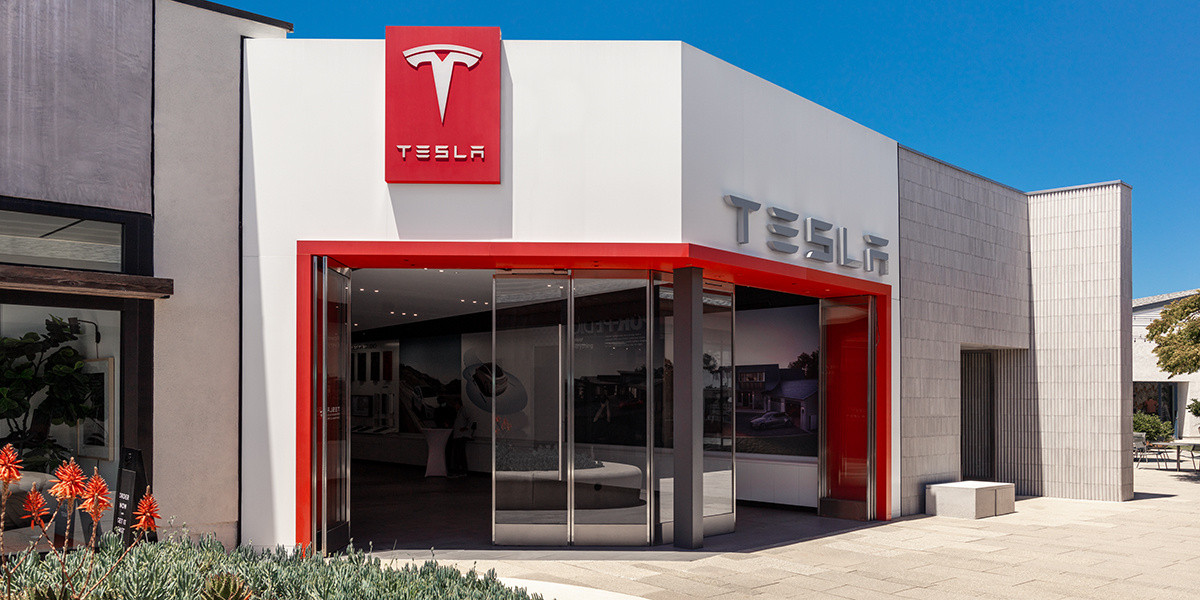
Tesla owners could be impacted by a new EV tax credit rule, which seems to be a new hoop to jump through for those who benefited from the “extension,” which allowed orderers to take delivery after the loss of the $7,500 discount.
After the Trump Administration initiated the phase-out of the $7,500 EV tax credit, many were happy to see the rules had been changed slightly, as deliveries could occur after the September 30 cutoff as long as orders were placed before the end of that month.
However, there appears to be a new threshold that EV buyers will have to go through, and it will impact their ability to get the credit, at least at the Point of Sale, for now.
Delivery must be completed by the end of the year, and buyers must take possession of the car by December 31, 2025, or they will lose the tax credit. The U.S. government will be closing the tax credit portal, which allows people to claim the credit at the Point of Sale.
🚨UPDATE: $7,500 Tax Credit Portal “Closes By End of Year”.
This is bad news for pending Tesla buyers (MYP) looking to lock in the $7,500 Tax Credit.
“it looks like the portal closes by end of the year so there be no way for us to guarantee the funds however, we will try our… pic.twitter.com/LnWiaXL30k
— DennisCW | wen my L (@DennisCW_) December 15, 2025
We confirmed with a Tesla Sales Advisor that any current orders that have the $7,500 tax credit applied to them must be completed by December 31, meaning delivery must take place by that date.
However, it is unclear at this point whether someone could still claim the credit when filing their tax returns for 2025 as long as the order reflects an order date before September 30.
If not, the order can still go through, but the buyer will not be able to claim the tax credit, meaning they will pay full price for the vehicle.
This puts some buyers in a strange limbo, especially if they placed an order for the Model Y Performance. Some deliveries have already taken place, and some are scheduled before the end of the month, but many others are not expecting deliveries until January.
